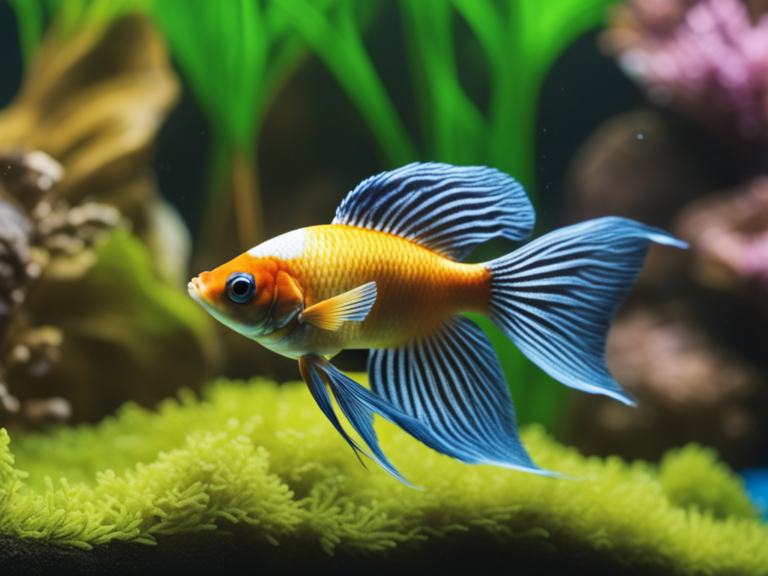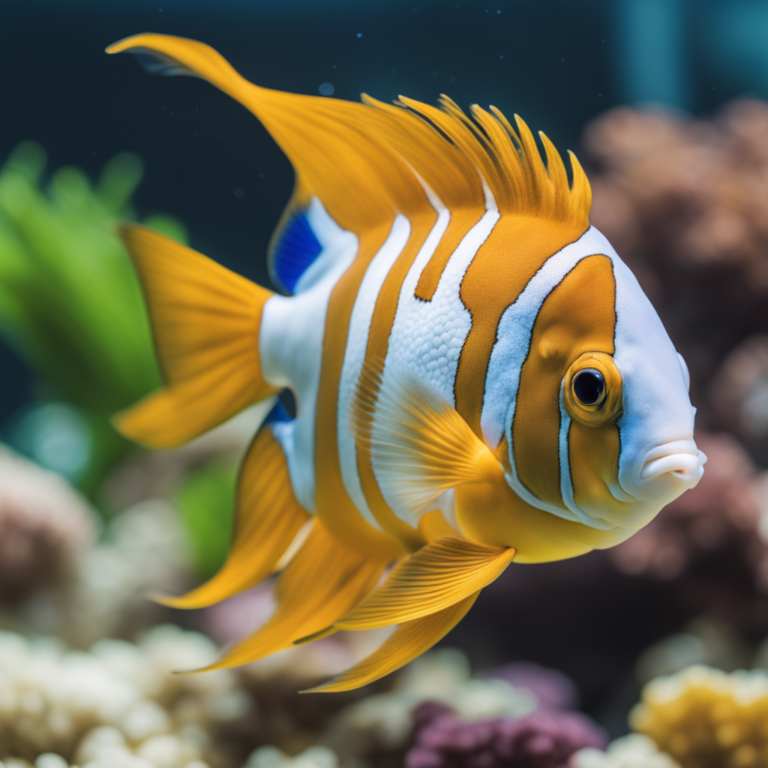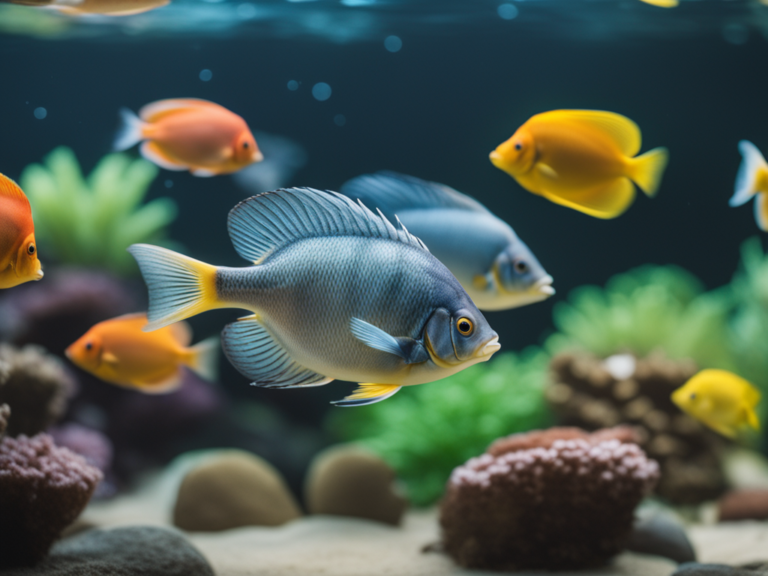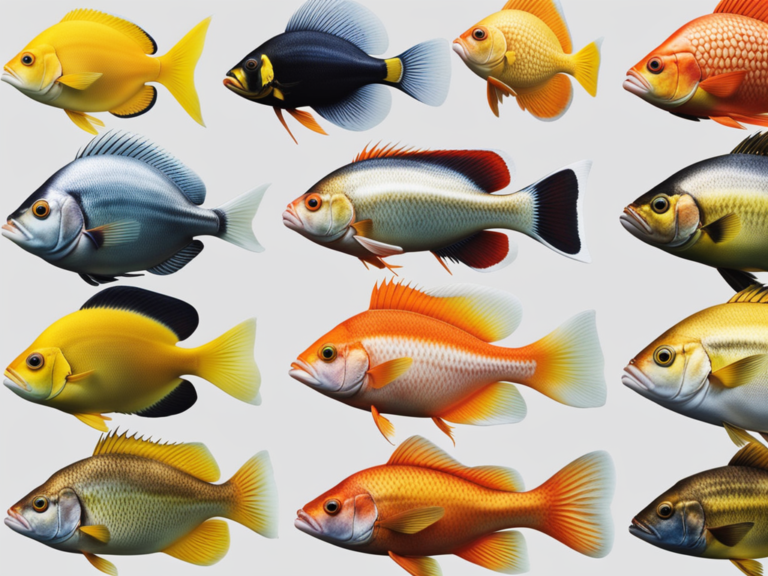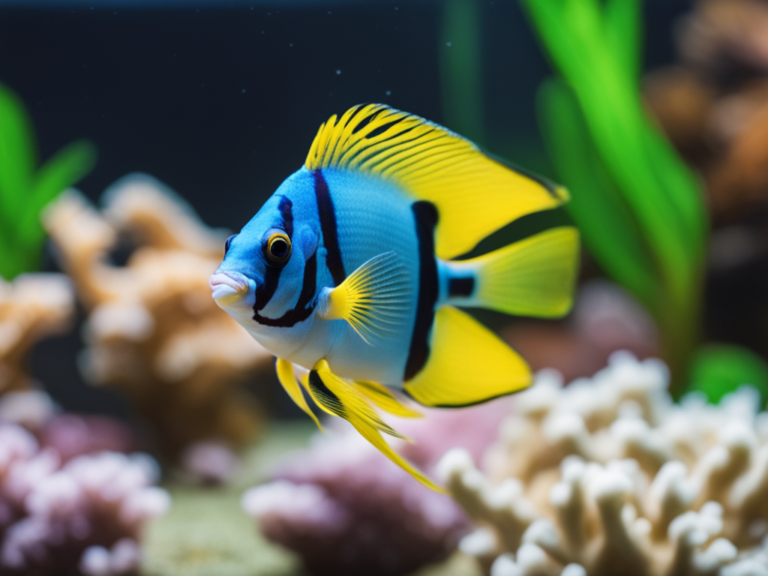Fish Breeds Safe for Kids
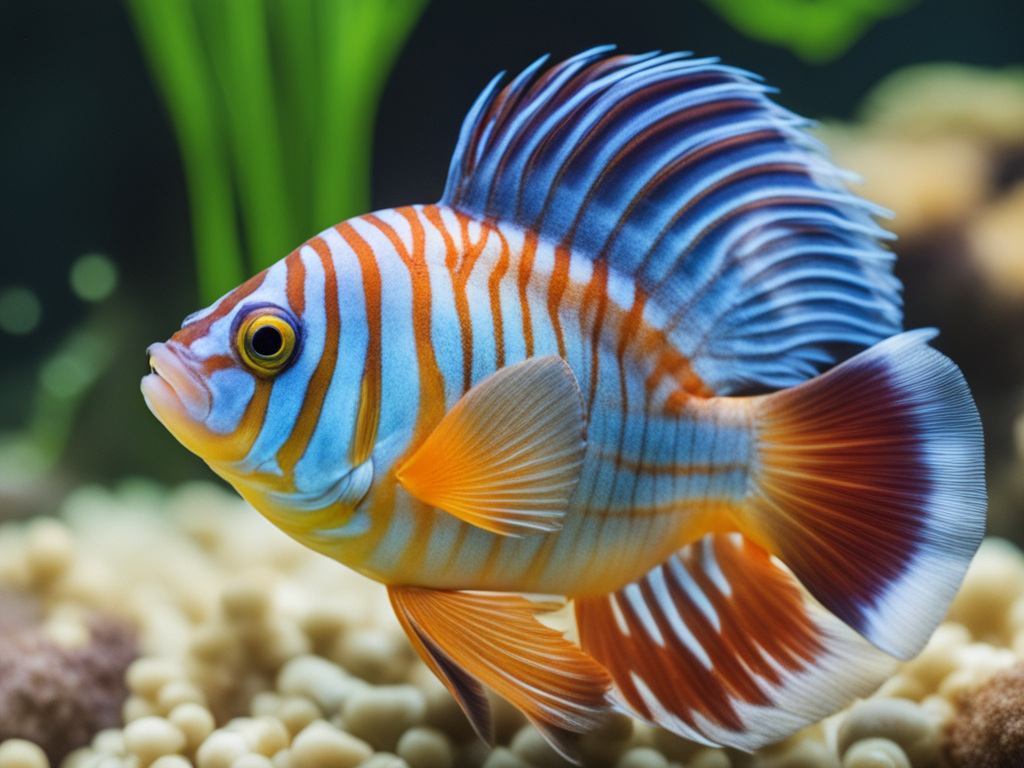
Fish Breeds Safe for Kids: Are your kids pining for a new pet? Look no further than fish breeds safe for kids! These finned friends are the perfect addition to your family. With their vibrant colors and calming presence, guppies, goldfish, betta fish, neon tetras, platies, zebra danios, white cloud mountain minnows, cherry barb fish, and rasboras are the top choices for your little ones. Not only are they easy to care for, but they also teach responsibility and empathy. With a simple tank setup, your kids can enjoy the beauty of these aquatic creatures without any worry. So, why wait? Dive into the world of fish breeds safe for kids and create unforgettable memories with your children!
Guppies
If you’re looking for a fish breed that is safe and enjoyable for kids, guppies are a great choice. Guppies, scientifically known as Poecilia reticulata, are small freshwater fish that are native to South America. They are popular among fish enthusiasts, including children, due to their vibrant colors and ease of care.
Breeding habits of guppies are fascinating to observe and can be a great learning experience for kids. Guppies are livebearers, which means that they give birth to live young rather than laying eggs. Female guppies can give birth to a large number of fry, making it exciting for kids to witness the birth process and see the tiny fry swimming around. It is important to note that guppies can breed rapidly, so it is essential to have a plan in place to manage the population if you choose to breed them.
In terms of tank requirements, guppies are relatively easy to accommodate. They thrive in a tank size of around 10 gallons or more, with a temperature range between 72 and 82 degrees Fahrenheit. It is important to provide them with a well-filtered tank to maintain water quality and a healthy environment. Guppies also appreciate a planted tank with plenty of hiding spots and swimming space. Additionally, a balanced diet consisting of high-quality fish flakes and occasional live or frozen foods will ensure their well-being.
Goldfish
When choosing a fish breed that is safe and enjoyable for kids, consider getting a goldfish. Goldfish make great pets for children due to their vibrant colors, calm nature, and ease of care. Here are some benefits of owning goldfish as pets and tips for caring for them in a home aquarium.
One of the benefits of owning goldfish is that they are visually appealing. Their shimmering scales and bright colors provide visual stimulation for kids, fostering an appreciation for nature. Additionally, goldfish have a calming effect, which can help children relax and reduce stress.
Caring for goldfish in a home aquarium is relatively easy, making them an ideal choice for kids. Here are some tips to ensure their well-being. Firstly, provide a spacious tank of at least 20 gallons for a single goldfish, as they require ample space to swim. Maintain a consistent water temperature between 65-75°F (18-24°C) and use a filtration system to keep the water clean. Regularly test the water for ammonia, nitrite, and nitrate levels, and perform regular water changes to maintain good water quality.
Feeding goldfish is simple. They enjoy a varied diet of high-quality fish flakes or pellets, supplemented with occasional treats such as frozen or live brine shrimp. Remember not to overfeed them, as this can lead to health issues.
Betta Fish
For the next fish breed that is safe and enjoyable for kids, consider getting a Betta Fish. Betta fish, also known as Siamese fighting fish, are small, colorful, and easy to care for, making them a popular choice for young fish enthusiasts. When setting up a tank for a Betta fish, it’s important to create an environment that mimics their natural habitat. A tank with a capacity of at least 5 gallons is recommended, as it provides enough space for the fish to swim and explore.
Decorations like plants, rocks, and caves can also be added to provide hiding spots and create a visually appealing space. It’s crucial to maintain the water temperature between 76-82°F, as Betta fish are tropical species and require warmer water.
Feeding Betta fish is relatively simple. They are carnivorous and require a diet primarily consisting of high-quality fish pellets or flakes specially formulated for Betta fish. These pellets should be fed to them in small, manageable portions, 2-3 times a day. It’s important not to overfeed them, as it can lead to health problems. Additionally, occasional treats like freeze-dried or frozen bloodworms can be offered to provide dietary variety and enhance their overall health.
Neon Tetras
Neon Tetras are a popular choice for kids looking to keep fish because of their vibrant colors and peaceful nature. These small, tropical freshwater fish are native to South America and are known for their bright blue and red stripes. Keeping neon tetras as pets has several benefits. Firstly, they are relatively easy to care for, making them a great option for beginners. They have a peaceful temperament and can be kept in small groups, so they are ideal for community tanks. Neon tetras are also active swimmers, adding movement and life to your aquarium.
To care for neon tetras in a home aquarium, there are a few important factors to consider. Firstly, they require a well-maintained tank with a capacity of at least 10 gallons. It is important to provide them with a suitable environment that mimics their natural habitat. This includes a pH level between 6.0 and 7.0, a temperature between 70°F and 80°F, and soft, slightly acidic water. Neon tetras prefer densely planted tanks with dim lighting, as this recreates their natural habitat and helps to reduce stress.
Feeding neon tetras is relatively easy. They are omnivorous and will readily accept a variety of foods, including flakes, pellets, freeze-dried or frozen foods, and live foods such as brine shrimp or daphnia. It is important to provide them with a varied diet to ensure their nutritional needs are met.
Platies
One popular fish breed safe for kids is the platy, a colorful and easy-to-care-for freshwater fish. Platies, also known as Xiphophorus maculatus, are native to Central America and are a popular choice for beginner fishkeepers due to their vibrant colors and peaceful nature. If you are interested in breeding platies, it is essential to understand their breeding habits and provide the appropriate tank setup.
Platies are livebearers, which means they give birth to live young instead of laying eggs. They are known for their high reproductive rates, and a single female can give birth to up to 100 fry in her lifetime. To encourage breeding, it is recommended to keep a ratio of one male to two or three females. This will help reduce any aggression towards the females and increase the chances of successful breeding. It is also crucial to provide plenty of hiding spots in the tank, such as plants or caves, where the fry can seek refuge.
When it comes to tank setup, platies are relatively adaptable and can thrive in a variety of conditions. However, it is important to provide a well-maintained tank with a minimum size of 10 gallons. The water temperature should be kept between 72-82°F, with a pH level between 7.0-8.0. Platies are not picky eaters and can be fed a diet consisting of high-quality flake or pellet food, supplemented with occasional live or frozen foods.
Swordtails
To continue exploring kid-friendly fish breeds, consider adding swordtails to your aquarium setup. Swordtails are a popular choice among fish enthusiasts due to their vibrant colors and peaceful nature. As with any pet, there are both pros and cons to keeping swordtails as pets.
One of the pros of keeping swordtails is their beauty. They come in a variety of colors, including red, orange, yellow, and black. Their name derives from the distinct sword-like extension on the lower part of their tails, which adds to their visual appeal. Another advantage is their peaceful temperament. Swordtails are generally peaceful and get along well with other fish, making them great companions for children.
However, there are a few cons to consider before adding swordtails to your aquarium. Firstly, they require a larger tank to thrive. Swordtails are active swimmers and need ample space to move around. It is recommended to have a tank size of at least 20 gallons for a small group of swordtails. Additionally, swordtails are prolific breeders. While this may be considered a pro for some, it can quickly lead to overcrowding if not properly managed.
If you decide to breed swordtails, there are a few tips to ensure successful breeding. Firstly, provide plenty of hiding spots in the tank to protect the fry. This can be achieved by adding plants or decorations that create sheltered areas. Secondly, maintain a stable water temperature between 72-82°F and a pH level of 7.0-8.0. Lastly, provide a balanced diet including both flake food and live or frozen foods to ensure the health and growth of the fry.
Molly Fish
When considering a safe and engaging fish breed for your children, molly fish offer a delightful combination of beauty and ease of care. Molly fish are known for their vibrant colors and unique patterns, making them a visually appealing addition to any aquarium. Here are some key aspects to consider when breeding and caring for molly fish:
- Breeding habits and care tips for molly fish:
- Molly fish are livebearers, which means they give birth to fully formed fry instead of laying eggs. This makes breeding them relatively easy and fascinating for children to observe.
- It is important to provide a separate breeding tank or enclosure for pregnant molly fish to prevent other fish from preying on the fry.
- Molly fish are omnivorous and require a balanced diet consisting of high-quality flakes, pellets, and occasional live or frozen foods such as brine shrimp or daphnia.
- Maintaining proper water conditions is crucial for their well-being. Molly fish prefer slightly alkaline water with a pH level between 7.5 and 8.2 and a temperature range of 72 to 82 degrees Fahrenheit.
- Regular water changes and filtration are essential to keep the aquarium clean and maintain optimal water quality.
- The different color variations of molly fish and their unique characteristics:
- Molly fish come in a wide range of colors, including black, white, orange, and various shades of silver and gold. Some molly fish even exhibit striking color patterns such as marbled or spotted.
- Sailfin mollies are a popular variety that have elongated dorsal fins resembling a sail, adding an elegant touch to their appearance.
- Balloon mollies, on the other hand, have a rounded body shape due to a genetic mutation, making them quite distinct.
- Lyretail mollies are known for their beautiful, flowing tail fins that resemble a lyre, giving them a graceful and eye-catching presence in the aquarium.
Zebra Danios
Moving on to Zebra Danios, you’ll find that these fish are another great option for kids due to their active nature and striking appearance. Zebra danios, also known as zebrafish, are small freshwater fish native to South Asia. They are named for their bold black and white stripes, resembling the patterns found on a zebra.
Zebra danios are known for their hardiness, making them an ideal choice for beginners. They can adapt to a wide range of water conditions and are relatively easy to care for. These fish thrive in a well-maintained aquarium with a temperature between 64-75°F (18-24°C) and a pH level of 6.5-7.0. Providing them with plenty of swimming space and a well-filtered tank is essential for their overall health and well-being.
One interesting fact about zebra danios is their schooling behavior. They are highly social fish and prefer to be kept in groups of at least six individuals. This mimics their natural behavior in the wild, where they swim together in large shoals for safety. Keeping them in a group will not only make them feel more comfortable but also enhance their vibrant colors and activity levels.
Zebra danios are known for their active nature, constantly swimming and exploring their environment. They are energetic and agile swimmers, often darting around the tank. This makes them a captivating sight for children to watch and enjoy. Additionally, these fish are known to exhibit interesting breeding behaviors, making them a great educational opportunity for kids to observe and learn about the life cycle of fish.
White Cloud Mountain Minnows
If you’re looking for another fish breed that is safe for kids, you’ll be delighted to learn about White Cloud Mountain Minnows. These small, colorful fish are perfect for kids who are just starting their journey into the world of fishkeeping. Here are some important details about the tank setup and feeding requirements for White Cloud Mountain Minnows:
- Tank Setup:
- White Cloud Mountain Minnows are relatively small fish, reaching a maximum size of about 1.5 inches. Therefore, a tank with a capacity of at least 10 gallons would be suitable for a small group of these fish.
- Provide plenty of hiding places in the tank, such as rocks, plants, or driftwood. These fish appreciate a well-decorated aquarium that mimics their natural habitat.
- Maintain a water temperature between 64°F and 72°F (18°C to 22°C) and a pH level around 6.5 to 7.5. They can tolerate a wide range of water conditions, making them adaptable to different setups.
- Feeding Requirements:
- White Cloud Mountain Minnows are omnivorous, which means they eat both plant matter and small insects in the wild. In captivity, they readily accept a variety of foods.
- Offer them a balanced diet consisting of high-quality flakes or pellets specifically formulated for small tropical fish.
- Supplement their diet with live or frozen foods like brine shrimp or daphnia. This helps to provide them with the necessary nutrients for optimal health.
With their vibrant colors and peaceful nature, White Cloud Mountain Minnows can bring joy and excitement to any kid’s fish tank. Just remember to provide them with a suitable tank setup and a nutritious diet, and they will thrive in their new aquatic home.
Cherry Barb Fish
Looking for another fish breed that is safe for kids? Consider adding Cherry Barb Fish to your child’s aquarium. Cherry Barb Fish, also known as Puntius titteya, are small freshwater fish native to Sri Lanka. They are popular among aquarium enthusiasts due to their vibrant colors and peaceful nature.
Cherry Barb Fish have an average lifespan of 4-5 years, making them a long-term commitment for your child. To ensure their well-being, it is important to provide them with a suitable environment. A tank of at least 20 gallons is recommended, with plenty of hiding places such as rocks, plants, and caves. The water temperature should be maintained between 74-82°F (23-28°C) and the pH level between 6.0-7.5. Regular water changes are necessary to maintain good water quality.
In terms of breeding habits, Cherry Barb Fish are relatively easy to breed. They are egg scatterers, meaning they release their eggs into the water where they are fertilized by the male. To encourage breeding, a separate breeding tank with fine-leaved plants and a slightly higher water temperature can be set up. Once the eggs are laid, they will hatch within 24-48 hours. It is important to remove the adults from the breeding tank to prevent them from eating the eggs or fry.
Rasboras
To add another fish breed that is safe for kids, consider introducing Rasboras to your child’s aquarium, continuing the exploration of vibrant and peaceful freshwater species. Rasboras are a popular choice among fish enthusiasts due to their striking colors and ease of care. Here are some key points about Rasboras’ breeding habits and tank requirements:
- Breeding habits: Rasboras are relatively easy to breed in a home aquarium. They are known for their peaceful nature and can be kept in small groups. To encourage breeding, provide a well-planted tank with plenty of hiding spots. Rasboras prefer soft, slightly acidic water with a pH range of 6.0 to 7.0. A temperature of 75-82°F (24-28°C) is ideal for breeding. It is recommended to have a ratio of two females to every male to reduce aggression and increase the chances of successful breeding.
- Tank requirements: Rasboras are small fish, typically growing to around 1-2 inches in length. They prefer a spacious tank with ample swimming space. A minimum tank size of 10 gallons is suitable for a small group of Rasboras. Provide them with a well-filtered tank to maintain excellent water quality. Rasboras are shoaling fish, so it is important to keep them in groups of at least six to eight individuals. This will help them feel secure and reduce stress levels.
- Compatibility: Rasboras are peaceful fish that coexist well with other non-aggressive species. They are known to be compatible with other small, peaceful fish like guppies, tetras, and corydoras catfish. However, it is essential to avoid keeping them with larger, aggressive fish that may harm or intimidate them.
Fish Breeds Safe for Kids Frequently Asked Questions
What Are the Ideal Tank Requirements for Keeping Guppies?
To keep guppies, you need an ideal tank size, appropriate decorations, and necessary accessories. The ideal tank size for guppies is around 10 gallons. Decorate the tank with plants and hiding spots. Accessories like a filter and heater are also essential.
Can Goldfish Be Kept in a Bowl Instead of a Tank?
Goldfish care is important to maintain their health. Keeping goldfish in a bowl has pros and cons. While it may seem convenient, bowls lack proper filtration and space. Consider a tank with appropriate size and equipment for optimal goldfish care.
Are Betta Fish Aggressive Towards Other Fish in a Community Tank?
Betta fish aggression is a common issue in community tanks. When introducing new fish, it is crucial to consider their compatibility and provide plenty of hiding spots. Proper research and monitoring can help prevent conflicts.
How Many Neon Tetras Should Be Kept Together in a School?
Neon tetras should be kept in a school of at least six to mimic their natural behavior. They have a lifespan of about five years. Guppies can be great companions in a community tank due to their colorful appearance and active nature.
Do Platies Require a Heater in Their Tank to Thrive?
Platies do not require a heater in their tank to thrive. However, it is important to maintain a stable temperature between 72-78 degrees Fahrenheit, as they are tropical fish. Betta fish can be compatible tank mates.
Conclusion
In conclusion, when considering fish breeds safe for children, it is important to prioritize the well-being and safety of both the child and the fish. Guppies, Goldfish, Betta Fish, Neon Tetras, Platies, Zebra Danios, White Cloud Mountain Minnows, Cherry Barb Fish, and Rasboras are all suitable options. These breeds are known for their hardiness, peaceful nature, and ease of care. By choosing these fish breeds, parents can provide an educational and enjoyable experience for their children while ensuring the health and happiness of the aquatic pets.




